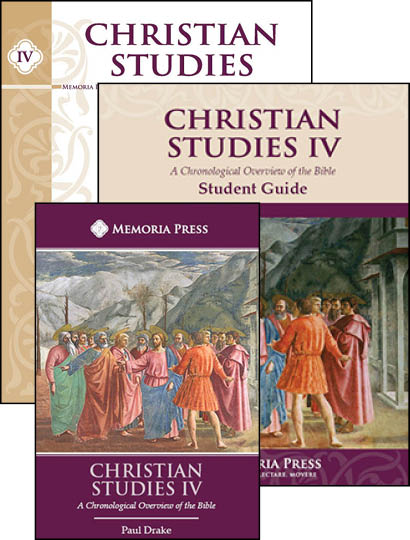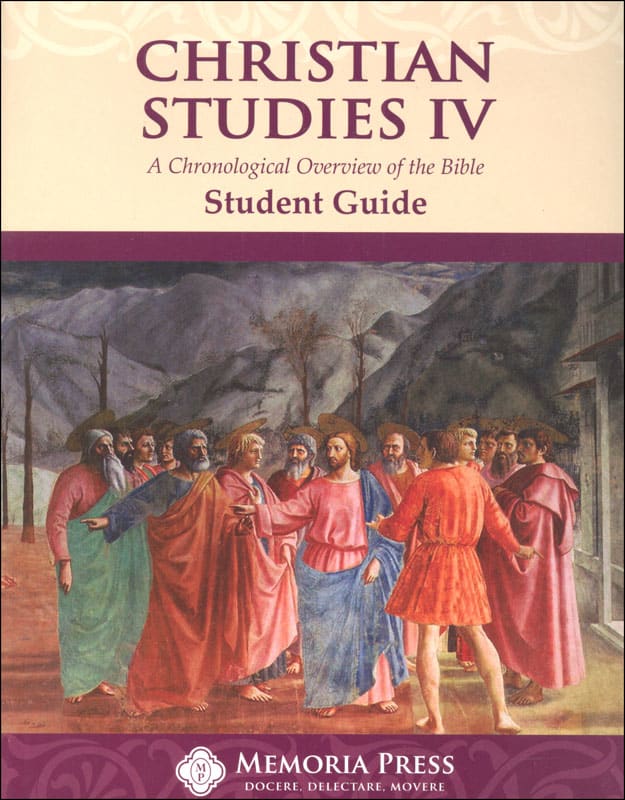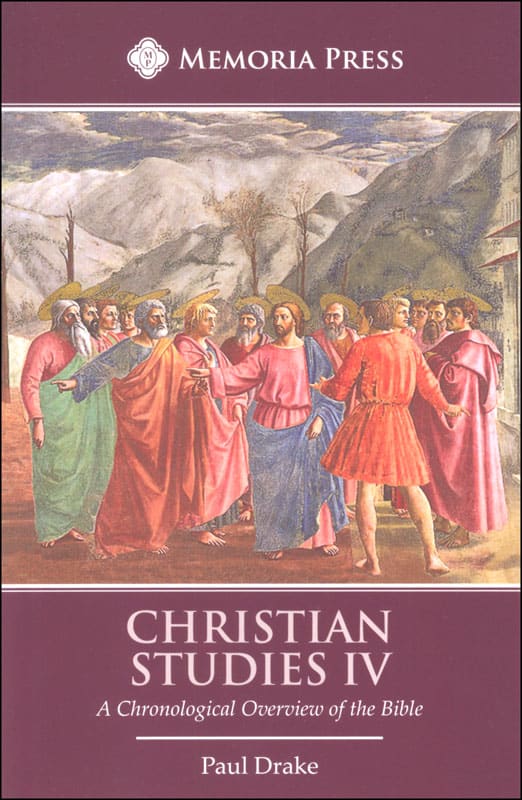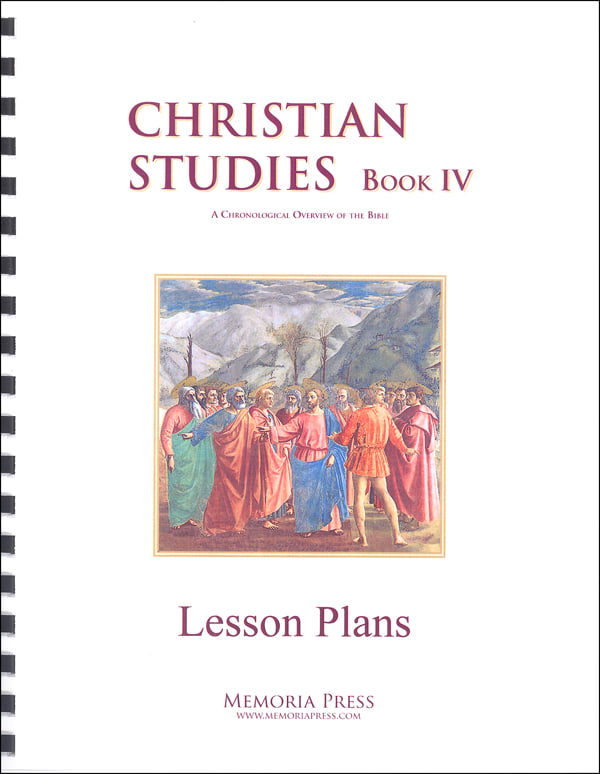Christian Studies IV is a survey course on the Bible for seventh or eighth graders. It reviews many of the key points taught in the three courses, Christian Studies I, II, and III, and serves to solidify that learning that was spaced out over three years. Christian Studies IV can also be used as a standalone course for students who have not taken the previous courses.
The course components are Christian Studies IV: A Chronological Overview of the Bible, Christian Studies Book Four: Teacher Manual, and Christian Studies IV: Student Guide. Students will also need a Bible for reference.
The course is written for use with students from different branches of Christianity. For example, it briefly discusses the different numbers of books in the Old Testament recognized by Protestants, Catholics, and the Orthodox, and it shows the two different enumerations of the Ten Commandments used by Catholics and Protestants.
The study is a factual survey of what the Bible says rather than a Bible study that advances denominational doctrines. It presents the story of the Bible and many key concepts, such as the promise of the Messiah.
The course has 25 lessons, a review lesson after every five lessons, and a final review. Generally, you will complete one lesson per week. Optional lesson plans are available if you want more guidance on scheduling.
For each lesson, students will read a passage in the 136-page Christian Studies IV: A Chronological Overview of the Bible. This book has one or a few pages on each book of the Bible, not including the deuterocanonical books. (Some books, such as I Kings and II Kings are combined into one passage.) After reading, students write in the student guide, filling in the blanks in sections about key people, key terms, and key ideas of that book of the Bible. The teacher manual suggests discussing and filling in the blanks with students.
In an appendix in both the student and teacher books are key scripture passages—many of which were supposed to be memorized in the first three courses. Students are encouraged to memorize as many of these as they can. There are also sets of Drill Questions requiring one-word or short-phrase answers. These questions are essentially the same as those in the first three courses; they cover key information in the Bible that students should know. Each question in both the teacher and student books shows the scripture reference (in parentheses) where the answer to each question can be found. After answering the questions for which they know the answers, students are to look up answers for the rest in their Bible.
Occasionally, there are Drill Questions that require students to search beyond the Bible. For instance, students need to know that “out of nothing” in Genesis 1 translates to ex nihilo in Latin, and they need to be able to identify “The path of Jesus’ suffering” as the Via Dolorosa.
Students should do regular oral reviews for both the memory verses and drill questions.
Some maps are included in the student guide, but they are for reference rather than labeling or identification activities.
The teacher manual has the same pages as those in the student guide, but with overprinted answers. Very brief instructions at the front of the teacher manual explain how to teach the course.
Summary
For students who have already completed the first three courses, Christian Studies IV works great as a review and reinforcement. It should also work well for students who are very familiar with the Bible and have already memorized some scripture verses. Students who haven’t taken the previous courses and are not familiar with the Bible might find the amount of memorization very challenging. In those situations, you might spread the course out over a number of years, taking time to have students read many of the books of the Bible in full for greater understanding.













